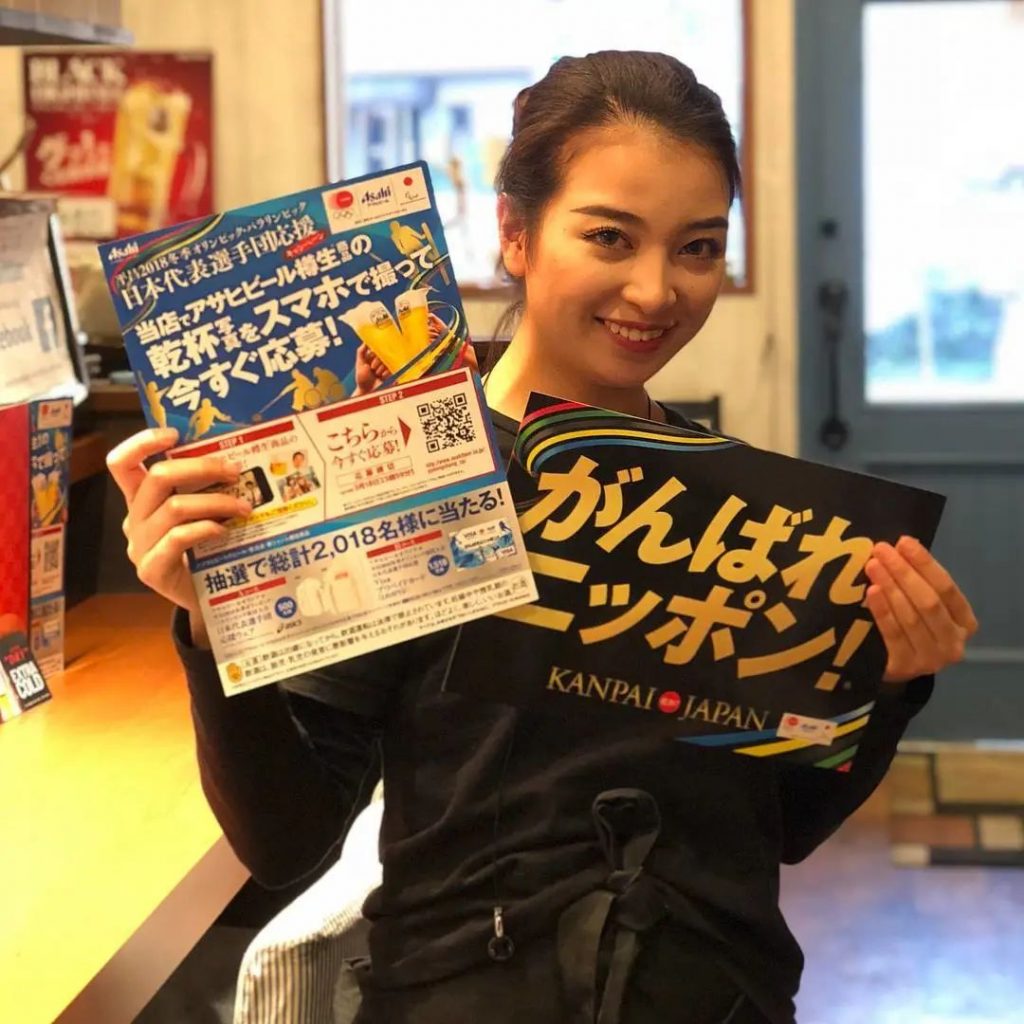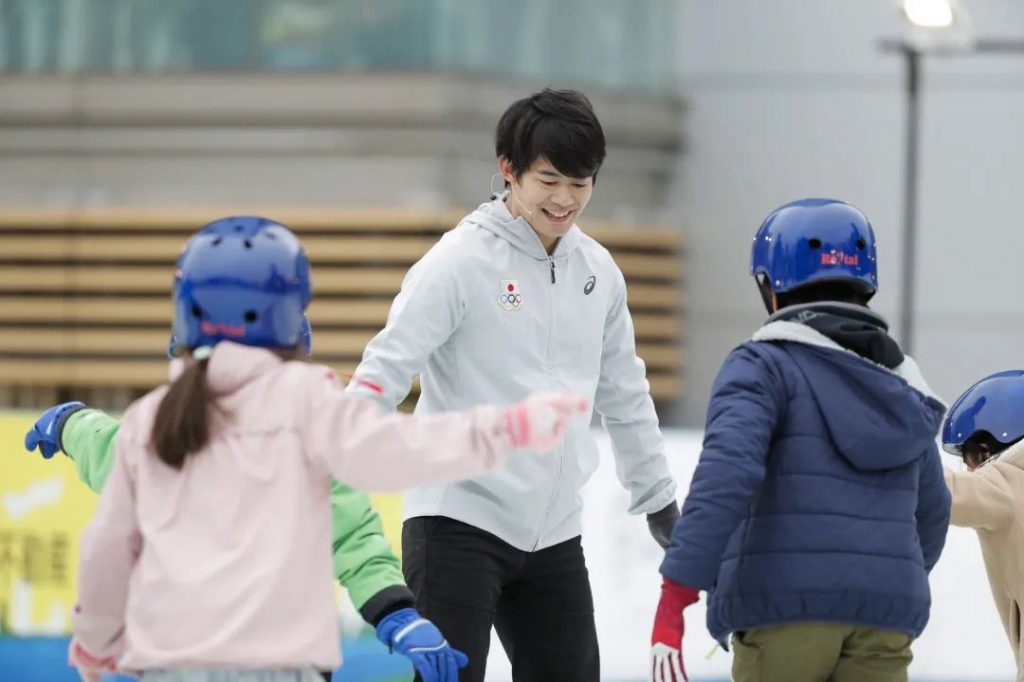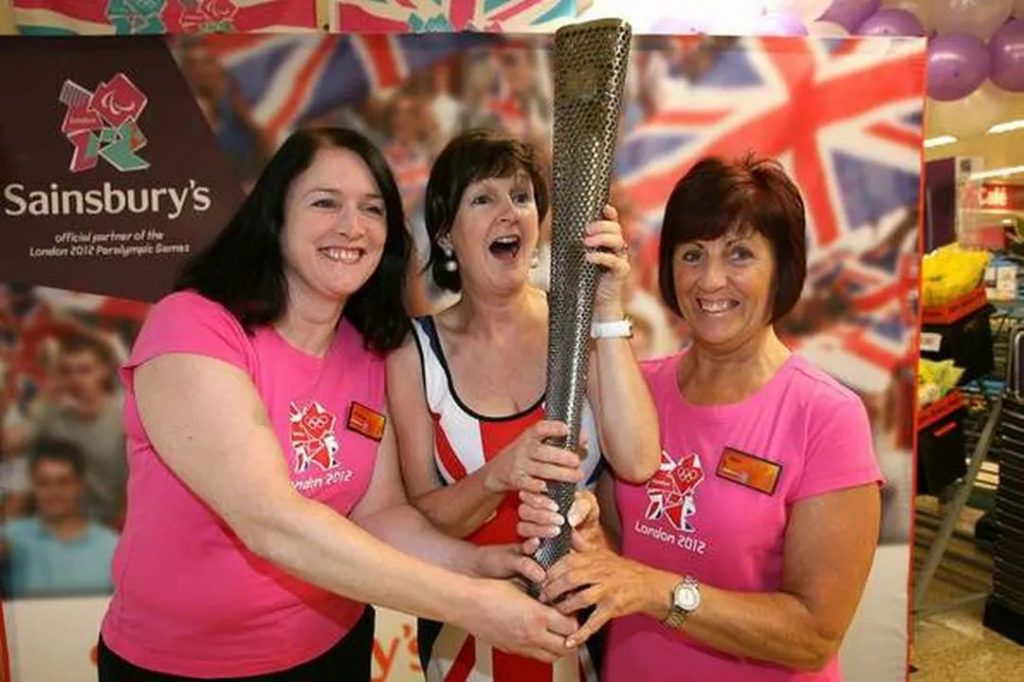作者:葛瑞飞 (Nick Griffith)
国际体育营销公司八方环球前高级副总裁,23年体育营销经验,国际顶级奥运营销专家。
Beijing 2008 was envisioned as a once-in-a-generation opportunity for China, not only for Olympic sport but as an engine for progress in society at large. Fewer than 14 years later, China has another opportunity to effect change, perhaps not at the level of the 2008 Games, but still transformative, nonetheless. The 2022 Olympic Winter Games is the next major global event that can provide ample opportunities for companies to take their brands to new heights.
The Winter Olympics offers unique brand attributes that set the property apart from most sporting events: snow, ice and cold temperatures. Their effects can range from causing delight among children playing in a nearby park to discomfort among fans sitting in outdoor venues to shutting down international events when severe weather becomes overwhelming. How brands successfully overcome these challenges can be amplified when leveraging Olympic intellectual property and real-world case studies.
For example, Bridgestone supplied winter tires for each of the official cars of the PyeongChang 2018 Games to ensure their safe travel around South Korea. The International Olympic Committee and PyeongChang 2018 Organizing Committee relied on the brand’s Blizzak tires to provide strong traction in snowy, icy and slushy conditions.
While Dow Chemical has not been the most high-profile sponsor at each Games, their products are found within virtually every venue and facility. In PyeongChang, Dow technology was used to insulate the ice at the Sliding Center and multiple skating rinks as well as the exterior of several venues including the Olympic & Paralympic Villages. Their coatings helped protect venues from water and ice damage. Even athletes’ mattresses utilized Dow foam which featured special warming technology. Helping Games organizers make their venues more energy efficient and reach zero carbon emission goals provides strong storytelling for their new business efforts well beyond the sports event industry.
When marketers begin to develop their activation plans around major events like the Olympics, their first instinct is often to invest in national federations – whether they’ve already secured Games rights or not. Official Beijing 2008 sponsors and other brands provided extensive support to sports federations leading up to the Games such as Yanjing Beer’s sponsorship of the national canoe, kayak and rowing teams, UPS’ support of the national basketball and women’s volleyball teams and Yili Dairy’s support of the national athletics, badminton, table tennis, synchronized swimming and rhythmic gymnastics teams. Financial support and exposure provided by brands are critical to the growth of sports around the world. These relationships can be enhanced even further when the brand’s technology and knowhow can be provided to federation administrators, coaches and athletes.
An excellent example was BMW’s support of the U.S. Bobsled & Skeleton Federation, which began in 2010 as part of a larger platform including the U.S. Olympic & Paralympic Teams, U.S. Speedskating, USA Track & Field and USA Swimming. BMW partnered with the federation to design a new 2-man bobsled to be used on the World Cup circuit and at the Olympic Winter Games Sochi 2014. As part of the bobsled launch, BMW developed a documentary, “Driving On Ice,” which showcased the USA Bobsled team’s quest for their first Olympic medal in the 2-man event since 1936. The special aired on the NBC broadcast network a month before the Sochi 2014 Games garnering over 1 million viewers. Teams in the new sleds won three medals in Sochi, one silver and two bronze—ending a 62-year medal drought in the 2-man bobsled Campaign results included 2 billion media impressions (an impressive number at the time), a 173% increase in Twitter followers and numerous marketing awards for sponsorship integration.
While federations receive a lot of attention, Games sponsors often overlook a key asset that is automatically included in their contracts – rights to the National Olympic and Paralympic Teams. Team China is hugely popular as evidenced by strong TV ratings for recent Olympic Games and Asian Games overseas. However, in 2008, we saw that brands were so focused on their support of the Games and welcoming the world to China, they failed to emphasize their support of National Olympic Team. At that time, the Chinese Olympic Committee had improved their approach to brands, emphasizing their commitment to being a stronger business partner and developing a modern commercial emblem which brands could use in their Olympic campaigns. However, leverage of Games marks and other assets eclipsed that of the Chinese Olympic Team that year.
Winter Olympic Team sponsorship campaigns can be compelling and generate interest and excitement among consumers. If budgets are limited, even simple activations can break through. Asahi Beer, the official beer of the Japanese Olympic Team, leveraged Olympic-themed prizes to encourage consumers to share photos of themselves in social media holding a glass or can of Asahi draft beer and cheering on Team Japan during the PyeongChang 2018 Games. Limited edition cans featuring Team Japan marks and winter athlete ambassadors were the focus of TV, outdoor and social media campaigns.
In addition, Mitsui Fudosan, the official real estate development sponsor of the Japanese Olympic Committee and Tokyo 2020 Games, set up a 2018 Team Japan support booth at their outdoor skating rink in the center of Tokyo. To celebrate the opening of the rink, as well as to send off Team Japan to South Korea, a media event was held pre-Games at the rink featuring professional figure skater Takahiko Kozuka, who led a clinic teaching kids how to skate. After the Games, Mitsui Fudosan, the JOC and the Tokyo 2020 Organizing Committee hosted a ceremony at Tokyo Midtown Tower, a Mitsui Fudosan property, to honor medalists and other notable athletes from the Team in front of 5,000 fans.
It is important to emphasize the 2022 Paralympic Winter Games and Paralympic Team should not be overlooked in China. They are comprised of elite athletes who have overcome great obstacles to reach the pinnacle of their sports. Witnessing competitors perform daring stunts with one or no legs on ice and snow, which most people with two legs could only dream of, can be incredibly inspiring. Fortune 500 companies such as The Hartford insurance in the USA and Sainsbury’s supermarket in the United Kingdom have invested in Paralympic-only partnerships, leveraging the values of the movement such as determination, equality, inspiration and courage in their marketing campaigns and employee morale & incentive programs.
While the postponement of the Tokyo Games has created major disruptions around the world, it can also provide an opportunity for Chinese Olympic sponsors. The proximity of the Summer Games to the Beijing 2022 Winter Games provides a potentially intensive 8-month window to engage consumers with a powerful campaign that spans two Olympic and two Paralympic Games.
Take some cues from the sponsor examples described above, and imagine a campaign that begins before the 2020 Games encouraging consumers to demonstrate their support of Team China as they compete in Tokyo. Continue to engage consumers during the Games via a combination of advertising, social media, retail, experiential (however possible pending COVID vaccine availability), athlete ambassadors and federation assets. Celebrate Team China’s success after the Olympic Games while continuing to communicate support of the Paralympic team in Tokyo in August & September. Then, leverage the momentum from victory in Tokyo and enthusiastic anticipation for the Beijing Games by launching a Winter Olympic campaign in October including Beijing 2022, Team China and athlete assets lasting through March when the Paralympic Winter Games conclude. Throughout the 8 months, monitor key target engagement metrics and adjust as necessary to maximize efficiency and effectiveness.
The Beijing 2022 Olympic flame will reach the final cauldron at the Bird’s Nest only 16 months from now. That might seem like a long time, but soon marketers will run out of runway to put all of their plans in place. For those who understand the power of the Winter Olympics and what the Games can do for their brands, they should start now, if they haven’t started already. This twice-in-a-generation opportunity will be here before we know it.
2008年的北京奥运会,无论是对于奥林匹克运动在中国的发展、对于中国社会的进步与发展,都曾被视为千载难逢。谁也想不到,仅仅在不到十四年之后,中国就拥有了另一个影响变革的重要机遇,其影响力虽然可能达不到2008年奥运会的程度,但毫无疑问依然具备划时代的意义。而对于热切期待将在全球范围提升品牌影响力的企业来说,2022年冬奥会将提供极为丰富的营销机会。
冬奥会拥有独一无二的品牌特质,雪、冰、严寒的天气等等使之迥然不同于大多数其他的运动赛事。这些特质带来的影响,可能为那些在街边公园里玩耍的孩子们带去快乐,也可能给坐在室外观众席上的运动迷们带去不适,天气变得极端恶劣的情况下还可能导致国际赛事的中止。对于品牌而言,在运用冬奥会知识产权创造真实的赞助运用案例时,通过如何成功克服这些挑战,可以带来良好的营销机会。
例如,普利司通公司是国际奥委会的TOP赞助商,他们为2018年平昌冬奥会的所有官方车辆提供了特殊的冬季轮胎-普利司通品牌的“暴雪Blizzak”轮胎,其卓越的地面附着力,在无论是下雪、结冰还是融雪的路面上都保障了所有冬奥会车辆的行车安全。

例如,陶氏化学在历届奥运会上都不是特别高调的赞助商,但是他们的产品却几乎出现在所有比赛场地和设施上。在平昌冬奥会里,陶氏化学的技术被应用于有舵雪车场地和多个滑冰场地来为冰隔热,也应用于奥运村和残奥村多个场地的外部装修。他们的外层涂装技术有助于保护场馆免受水和冰的侵害 。甚至运动员们的垫子也应用了陶氏化学的泡棉:一种采取特殊技术给人温暖感觉的材料。通过帮助赛事组织者实现场馆高效节能、实现碳排放量为零的目标,陶氏化学在其面向全球的业务拓展中,可以讲出远远超越体育范畴的品牌故事。

当市场营销人员们开始围绕像奥运会这样的超大型赛事制定他们的品牌推广计划时,往往他们的第一个本能就是去赞助各个运动项目的国家队,无论这些运动队是否已经有了奥运会参赛资格。2008年北京奥运会时,北京奥运会的官方赞助商对各个运动项目的国家队提供了广泛的支持,例如燕京啤酒赞助国家皮划艇队,UPS赞助国家篮球队和女排,伊利赞助国家田径、羽毛球、网球、花样游泳和艺术体操队。
在促进运动发展方面,赞助商提供的经济支持和宣传推广在世界范围内都是极为重要的。如果一个品牌能够将其技术和解决方案提供给这些运动协会的管理者、教练和运动员,那么这种支持关系就会得到强化。
其中一个精彩的例子就是宝马公司对美国雪车协会的赞助,这个合作最早始于2010年,是宝马美国奥委会赞助的一部分,还包括赞助美国速滑协会、美国田径协会及美国游泳协会。宝马公司作为美国雪车协会的合作伙伴,设计了一个新款的双人雪车,用在世界杯赛场以及2014年的索契冬奥会。
发布这款雪车时,宝马公司制作了一个纪录片《冰上驾驶》,讲述了美国雪车队自1936年以来在双人雪车比赛中不懈地追求第一块奥运金牌的故事。这个纪录片在索契冬奥会开始的前一个月起在美国全国广播公司的网络上播放,吸引了超过百万的浏览者。随着使用新款雪车的美国队在索契取得三枚金牌、一枚银牌和两枚铜牌的骄人成绩,结束了长达62年的双人雪车金牌荒,宝马的赞助营销获得了20亿以上的媒体印象(在当时是极为骄人的数字)、推特的关注者增长了173%,并通过这一推广活动赢得了大量的营销奖项。
赞助商们对这些运动队会投入大量的关注,但往往会忽视一项包含在赞助合同中的关键资产,就是整个国家奥运代表团和残疾人奥运代表团的赞助权益。
中国国家奥运代表团受到热烈欢迎的程度,可以通过近年来奥运及亚运转播时的高收视率得到印证。然而在2008年,我们看到赞助商们太专注于他们各自支持的运动项目、并且忙着欢迎世界来到中国,却没能够充分强调他们对整个国家奥运代表团的支持。当时的中国奥委会已经改进了他们与赞助品牌接触的方式,强调了对赞助品牌的支持、发布了更适应现代品牌传播的商用徽记。但是,当时的赞助商们都没能好好地运用起整个国家奥运代表团赞助的权益。
奥运代表团的赞助运用可以做到引人入胜,并在消费者中催生关注度和兴奋点。如果预算有限,即使通过简单的推广活动也可以取得突破。
日本奥运代表团的官方赞助品牌朝日啤酒,利用奥运主题的奖品,鼓励消费者在社交媒体上分享他们举着朝日生啤的玻璃杯或易拉罐、为参加2018平昌冬奥会的日本队加油的照片。限量版的带有日本奥运代表团标识的罐装酒,以及冬奥运动员大使形象,成为电视、户外活动赞助和社交媒体战役的焦点。

此外,日本奥委会及2020东京奥运会房地产开发类别的官方赞助商三菱不动产,在其开发的东京市中心最大的室外冰场建起专门支持2018年奥运代表团的展厅。为了庆祝这个户外冰场的开放,同时为了欢送日本奥运代表团奔赴韩国,在该滑冰场还举办了一个媒体活动,由专业花样滑冰运动员小冢崇彦带领一个训练班,教孩子们如何滑冰。
当日本奥运代表团凯旋归来后,三菱不动产、日本奥委会和2020东京奥运组委会在三菱不动产旗下的东京中城大厦举办了庆祝活动,与5000多名粉丝一起鸣谢了日本奥运代表团的获得奖牌的运动员和其他著名运动员们。


有必要强调一下,在2022年冬奥会的赞助营销上,不能忽视冬残奥会和残奥会运动队。这些运动队的精英运动员们,克服了极大的挑战才能达到运动的巅峰。目睹那些只有一条腿、甚至丧失了双腿的运动员在冰雪之上展示惊人的运动才艺,那些连大多数双腿健全的人都不敢梦想的技能,是无比激励人心的。一些财富500强企业,例如美国的哈特福保险公司、英国的萨因斯博瑞超市,都专门赞助了残奥会,在他们的市场营销推广或者员工激励项目中,都会突出体育运动的深层价值理念,例如决心、毅力、平等、激励、勇气等。

在东京奥运会的延迟举办引发了世界范围内的赛事赛历重整之际,中国的奥林匹克赞助商们应该意识到,这对于他们是一个机会。夏季奥运会与2022北京冬奥会赛期相隔不远,其实提供了一个为期长达八个月的密集宣传期,可以让消费者们观赏一场贯穿两个奥运、两个残奥的强大推广战役。
从上述的赞助例子获得一些灵感,并想象一下:
- 从2020奥运之前开始一场推广战役,鼓励消费者们展示他们对中国奥运代表团赴东京参赛的支持;
- 接下来在比赛过程中,继续综合运用广告、社交媒体、零售、体验(尽管可能取决于新冠病毒的影响)等方式、以及运动员大使和国家队资源,来激发消费者的参与;
- 然后在奥运会结束后庆祝中国队的凯旋,同时围绕着支持参加八、九月东京残奥会的中国残奥代表团而继续与消费者沟通;
- 在十月份,借助中国队残奥代表团从东京凯旋的热度,推出充分运用2022北京冬奥、中国冬奥代表团、运动员资源持续至冬奥会后三月的推广战役。
在这样持续八个月的过程中,当然需要密切观察关键目标的参与度指标,并在必要的时候予以适度调整,以取得最有效、最大化的推广效果。
2022北京冬奥会的圣火,16个月之后就要在鸟巢被点燃了。16个月看似漫长、实则短暂,市场营销者们将冥思苦想,汇聚起锦囊妙计。那些真正懂得冬奥会的价值、懂得赛事赋予品牌的意义的人,如果迄今尚未出手,那么此刻应该行动,抓住这个依然是百年难遇的营销机会了。

葛瑞飞,国际体育营销公司八方环球前高级副总裁,23年体育营销经验,国际顶级奥运营销专家。Collaboration Lifestyle & Sports公司和 GlobalLeagueShop.com创始人。 他曾经在连续多届奥运会、FIFA足球世界杯、美国、亚洲、欧洲和巴西的职业联赛和青少年体育中为赞助商的体育营销提供咨询,他2004年至2008年曾派驻北京,负责北京2008年奥运会赞助商的咨询业务。他也将与橙光线公司合作,为中国体育赞助商及体育赛事的发展助力献策。
赛事市场开发必修课程火热报名中👇👇👇

扫码开启学习之旅

橙光线赛事橙长学院



